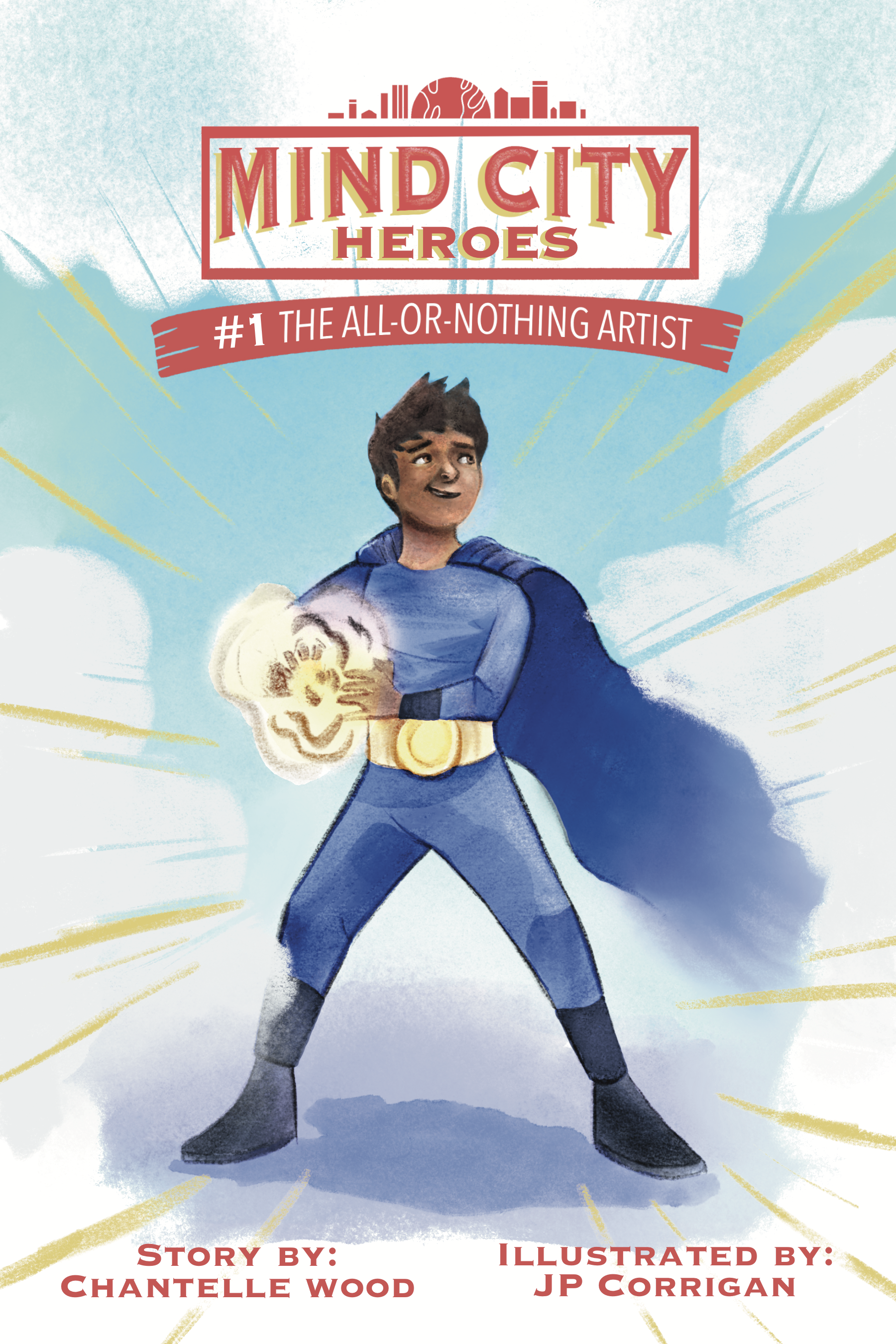Indie Groundbreaking Publisher
Superpowered Publishing
Mind City Heroes Brings Cognitive Behavioral Therapy to Life

The world needs more superheroes. And Chantelle Wood is out to train them.
Wood released the first book in her new children’s chapter book series, Mind City Heroes, on April 9. In the series, characters Luke and Sophia travel into the magical world of their minds to become superheroes and fight their negative thoughts.
Geared towards kids ages 6-10, the series aims to help kids become their own mental superheroes through exposing them to the ideas in Cognitive Behavioral Therapy (CBT). CBT is one of the most empirically-validated treatments for a variety of mental disorders.
Wood has had her own journey with mental illness. After struggling through her own bout of mental illness in college, she eventually found Cognitive Behavioral Therapy and says it transformed her life. But she worries that while mental health is often talked about, few people are talking about CBT.
“If we were talking about physical health, everyone knows that exercise and eating well is beneficial,” says Wood. “Yet when we talk about mental health, few people understand that we have a tool that is extremely well-researched and empirically-validated, and that’s CBT. While I’m not a mental health professional, I want to help others understand the concepts in CBT so they can at least gain familiarity with its ideas.”
According to the National Association of Cognitive-Behavioral Therapists, “Cognitive-behavioral therapy is based on the idea that our thoughts cause our feelings and behaviors, not external things, like people, situations, and events. The benefit of this fact is that we can change how we think to feel/act better even if the situation does not change.”
CBT teaches individuals to analyze their thoughts and determine if they are realistic or if they are incorrect, or “cognitive distortions.” They can then talk back to these distortions to get to more realistic thoughts and feel better.
For example, someone might text a friend and not receive an answer. They may think, “My friend doesn’t like me,” or “I’m such a loser and no one wants to be my friend,” which would cause negative emotions. CBT would help them discover distortions in their thoughts and turn them into something more realistic, like “I don’t know why my friend didn’t respond. She could be busy with any number of things or simply forgot to respond,” or “One friend rejecting me does not mean I am a loser. I have intrinsic worth that is not dependent on what one person thinks of me. I can also develop other friendships.”
Wood feels that CBT helped her become a superhero of sorts within her mind. “Once I really understood how to analyze my thoughts and understand common thinking errors, it was a really liberating feeling. I now feel ready to handle anything that happens.”
That’s what led Wood to decide on a superhero theme for the books. The books are structured to deal with one type of cognitive distortion in each book. In the first book, The All-or-Nothing Artist, third-grader Luke engages in all-or-nothing thinking when he receives a less-than-expected grade on a math test and despairs that he’ll never be a good student. But he mysteriously finds a notebook and pen, and when he writes in it, he is transported into the magical world of his mind.
In this world, named “Luketown,” Luke finds buildings made of Legos, talking animals, and all-you-can-eat ice cream shops. He also discovers he’s a superhero with his own superhero gadgets, but does not yet have superpowers because he has to earn them. His helper, Agent Logic, explains that someone is spraying the city with goo. They discover that this person, Mr. Ideal, is frustrated with any imperfections and has decided to spray anything less than ideal with dark goo, or plaster anything perfect with white spray.
Luke is unable to stop him until he realizes that both he and Mr. Ideal are engaging in all-or-nothing thinking, which means they think things must either be perfect or a failure. When he realizes that this way of thinking is unhelpful and untrue, Luke gains his first superpower, force fields. He uses these in an epic battle to stop Mr. Ideal long enough to convince him of the error of his thoughts. Together they repair and clean up the city.
In the end, Luke returns to his class, where instead of despairing over his test score, he cheerfully tries to learn from his mistakes.
The next book in the series, set to publish later this year, will follow fellow classmate Sophia as she battles the "Mislabeling Monster."
By reading this and other future books in the series, Wood hopes that kids can start to realize that unhelpful thoughts can hold them back, and they can start to analyze distortions in their own thoughts.
Maybe then they can become their own superheroes.
* * * * *

Mind City Heroes #1: The All-or-Nothing Artist
102 pages, $7.99
ISBN 9781962985000
Ocean Moon Publishing

